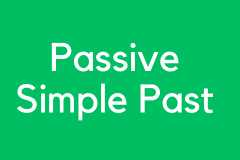Adverb Placement
Listen to four conversations using the grammar point.
Answer the following questions about the interview.
Adverb Placement
Point 1 : An adverb can modify a verb by giving more meaning to an action. It usually goes after a main verb, but it can go before it.
- He left quickly.
- He spoke quietly in my ear.
- The rain fell heavily outside.
- The cat suddenly jumped on the table.
Point 2 : Adverbs usually go after Be verbs.
- You’re sadly mistaken.
- I'm not completely sure.
- He is fortunately not sick.
- She is slightly upset with you.
Point 3 : Adverbs go between the auxiliary Be verbs and the main verb.
- I’m tentatively planning on going to Spain.
- She is clearly not listening to me.
- It was easily repaired.
- The door was loudly shut by the wind.
Point 4: Adverbs usually appear between a verb and modal.
- You should definitely check it out.
- I did not completely understand him.
- I will surely be there.
- You might eventually get in trouble.
Point 5 : For dramatic effect or emphasis, the adverb sometimes appears before a modal, but not auxiliary verbs (is, was, have).
- You definitely should check it out.
- I completely did not understand him.
- I surely will be there.
- You eventually might get in trouble.
Main Text Goes Here










